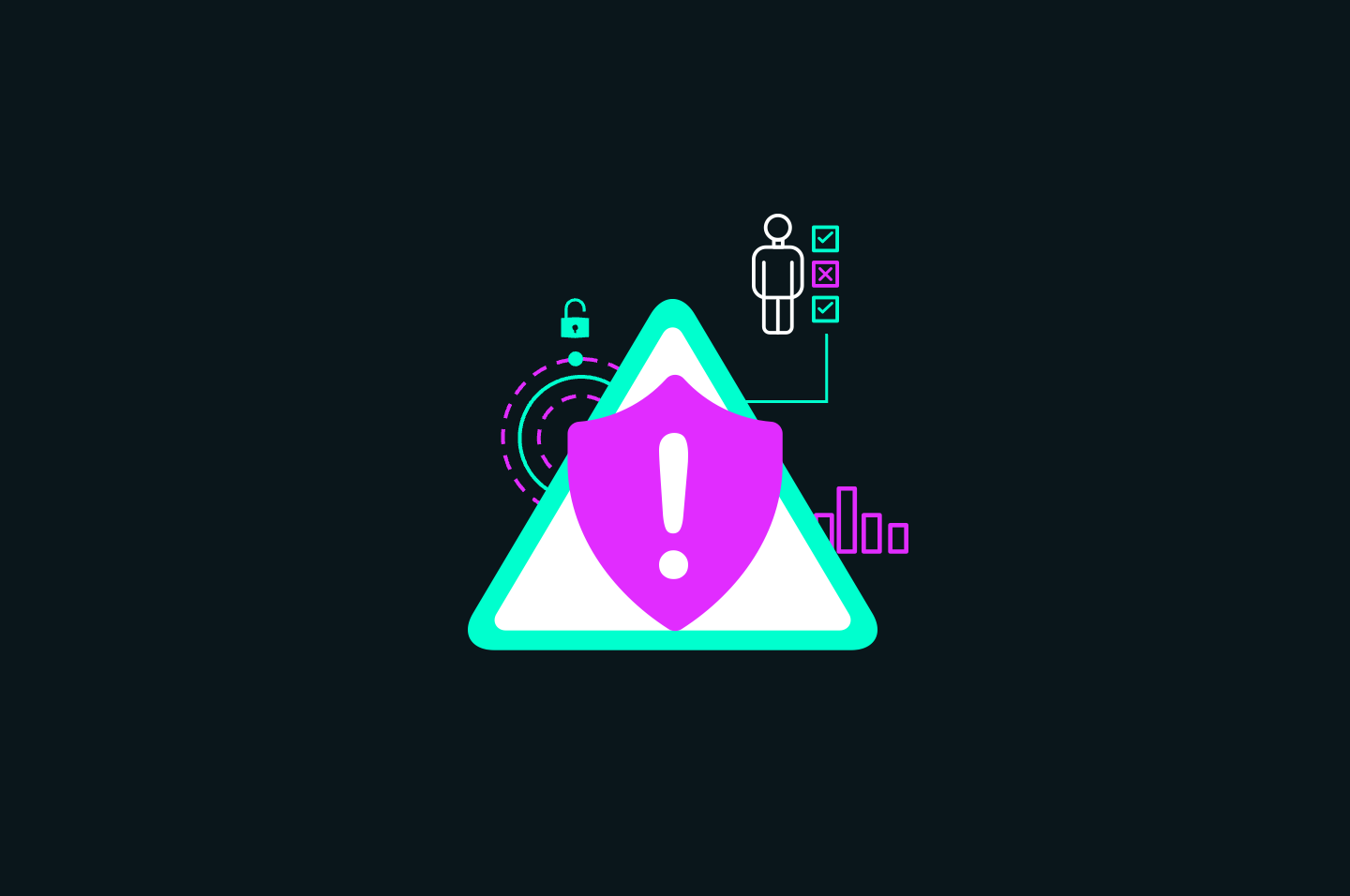Introduction
There’s no better learning experience than getting hit by a security breach at three in the afternoon on a Friday in summer, especially one that compromises a major client’s data.
In technical, industry terms, this is called an “oh s**t moment.”
The worst part? You find out it originated from one of your third-party vendors that you thought was sufficiently vetted.
Of course, the consequences of not doing your homework in this case are severe. And now, you’re on the hook for the long list of potential issues — the cost of the breach, reputational damage, legal repercussions, you name it.
But with the right process and tools, you can properly assess vendor risk before an event like this happens, minimizing the likelihood of vendor-related security issues.
In this article, we’ll provide you with a practical understanding of the what and why behind vendor risk assessments, as well as a step-by-step guide and best practices. This will equip you with the knowledge and tools you need to confidently perform a vendor risk assessment.
By the time you’ve finished reading, you’ll know exactly how to vet third parties and prevent costly security breaches — while keeping your summer weekend plans.
Key Takeaways
- A vendor risk assessment (VRA) is the process of systematically evaluating a third-party vendor’s risk level.
- VRAs are crucial to understanding and mitigating risks before and while working with vendors. They can be especially helpful for MSSPs looking to assess their customers' vendors.
- The steps to running a third-party vendor risk assessment are:some text
- Identify your vendors - This includes any vendors you work with (from office suppliers to data storage management).
- Categorize your vendors - This step is crucial for determining the vendor’s risk level.
- Assess vendor risk - The actual risk assessment process usually includes a questionnaire, background check, understanding their risks and controls, and thorough documentation and evidence.
- Risk management strategies - This step consists of implementing risk mitigation measures, such as contractual agreements, regular audits, and incident response plans.
- A few best practices for VRAs:some text
- Emphasize policy and procedure clarity.
- Encourage collaboration with vendors.
- Conduct regular reviews.
- Provide training.
- Leverage software and tech to simplify VRAs.
- Get streamlined vendor risk assessment with the help of cloud-based vendor risk assessment software that can highlight vendor risk, run assessments, and manage audits

What Is a Vendor Risk Assessment (VRA)?
A vendor risk assessment (VRA) is your process for systematically evaluating a third-party vendor’s risk profile. This process involves identifying, analyzing, and mitigating any potential risks of working with vendors to protect your organization’s data and operations.
The program usually involves establishing a clear set of expectations when onboarding vendors (as well as maintaining an ongoing relationship). By determining these expectations ahead of time and communicating them effectively at the onset, you can ensure a smooth onboarding process. While performing a VRA at the onset of a vendor relationship is ideal, it’s also helpful in evaluating risks associated with the vendors you already work with, helping mitigate any risks moving forward.
By carefully examining vendors and their security programs, you can mitigate risks ahead of time and enhance your overall cybersecurity plan. Compliance frameworks also tend to be pretty rigid when it comes to working with third parties, so VRAs can also help fulfill requirements for achieving regulatory compliance.
How to Perform a Third-Party Vendor Risk Assessment
Now for the important part — how to perform your VRAs. This might differ from business to business, but the steps below are a good guideline of how the process (i.e., your third-party risk management policy) should look.
1. Comprehensively identify your vendors
This one’s pretty straightforward but essential — list all your third-party vendors.
Make sure you account for every single one your organization engages with. Think about your suppliers, service providers, and any business you’ve hired (or partnered with) that has access to your data or systems.
You’ll want to create a system for cataloging each vendor, ideally in a centralized database that can be easily and regularly updated. The more details you can include on each vendor, the better, especially concerning what information (data or systems) they’ve had access to. You might include details on their services, contractual agreements, points of contact, and more.
What about vendors you haven’t worked with in a while? Yes, include them as well. Even if you aren’t currently engaged with them, if they’ve had access to your data or systems, you need to make note of that.
Future breaches have been known to occur from past security vulnerabilities, so keep that in mind.
2. Categorize your vendors
The next step is to categorize your detailed, extensive list of vendors. Your goal in this step is to establish the theoretical level of risk each vendor poses to your organization. By outlining the level of risk, you can adjust which vendors to prioritize when it comes to third-party risk management. The higher the risk, the higher the priority.
Most organizations will consider three key factors during the categorization stage:
- Data sensitivity: What type of data are your vendors working with? You'll want to classify it as a higher risk level if it’s highly sensitive, such as personally identifiable information (PII), financial data, or proprietary business information.
- Operational impact: You have two main points to consider for this category. The first is the impact of a vendor’s failure to deliver on their services (or products). This could negatively affect your organization, leading to downtime or revenue loss. The second is the impact of a vendor-related security incident as it relates to that particular vendor. For example, Vendor A is more of a risk than Vendor B because Vendor A has access to PII while Vendor B provides office supplies.
- Regulatory requirements: Every industry has different compliance requirements, so consider which ones are relevant to yours. As part of your process, you’ll require vendors to hold to specific regulations so they can keep their organization — and yours — compliant. This has never been more important for industries with strict data protection laws, such as HIPAA for healthcare companies. In fact, look at how the FTC recently amended its Safeguards Rule to require non-banking financial institutions to report data breaches affecting 500 people or more. These are the kinds of things you need to know about before moving forward.
You may consider adjusting your third-party risk management framework for active compared to inactive vendors. Just be sure to build out their risk profile and conduct periodic reviews. You can initiate a security review in the event of a status change, but it’s important to set expectations through your updated security process.
3. Assessing vendor risk
Time for the actual risk assessment process. This stage involves thoroughly assessing your vendors, including reviewing their security policies, risks, and controls.
The best place to start is to send vendors a detailed security questionnaire to gather their comprehensive security and operational information.
To build out the most complete profile, you should include questions on their capabilities and financial health, among others. You don’t have to focus solely on security-related questions. The more you know, the better you can understand the risk.
Along with the questionnaire, you’ll want to review any documentation they can provide, such as security policies, certifications, and audit reports.
You can conduct your own background check on a vendor at any point during this stage, focusing on their history, financial stability, and reputation in the industry.
Finally, you need a detailed understanding of vendor risks and controls, especially regarding anything related to your data or systems.
Compile a comprehensive risk profile and assign each vendor a risk level from the above information, which is a score based on their relative risk. This is the score by which you’ll rank which vendors to prioritize for the next stage of third-party risk management.
Granted, this is a lot of work, and it can feel like juggling moving parts. Thankfully, there are options for automating several steps of this process while documenting each piece.
For example, our Vendor Risk Manager can help you quickly create questionnaires, standardize the risk assessment process across multiple vendors, and instantly flag potential security risks so you know what to prioritize. Not only does this save you time (and headaches), but it makes the entire VRA process smoother and more consistent.
4. Implementing third-party vendor risk management strategies
You know everything you need to know about your vendors, and you’ve established which ones are the highest priority by their risk levels.
The next step is to address your identified risks and establish appropriate controls to mitigate them. Note that these will be different based on your vendors. There are three main ways to do this:
1. Contractual agreements
One way to cover a lot of ground is to establish specific contractual agreements. For example, you might include a clause in your agreement that requires vendors to achieve ISO 27001 certification and disclose details of a data breach within 24 hours of it occurring.
2. Regular audits
You can also use regular audits as part of your risk management strategy. These audits will examine if vendors maintain their contractual obligations and security standards.
You should leverage both scheduled and surprise audits to paint the clearest picture of a vendor’s security program. For example, you might conduct quarterly security audits and two surprise audits a year.
3. Incident response plans
If you establish a clear incident response plan ahead of time, you can work with the vendor to quickly resolve the issue. This response plan aims to keep vendors cooperative and communicative if something goes wrong.
Since both parties agree to it, there will be a clearly communicated set of steps to mitigate and resolve these issues as fast as possible. Your plan should include steps for remediation and focus on keeping the lines of communication open for full transparency.
Vendor risk assessment best practices
We may have touched on a few of these principles in the above sections, but here are a few VRA best practices:
1. Keep your policies and procedures crystal clear. Don’t be afraid to get very specific concerning policies, as they’re the foundation of any effective third-party risk management strategy.
2. Encourage a collaborative approach with your vendors. Better, stronger security measures create a winning situation for every party and department involved. The more collaborative you can be internally and externally, the more ground you’ll cover with a comprehensive program.
3. Make sure reviews are an ongoing process. Things constantly change in the world of compliance, whether it’s regulations or the threat landscape itself. Stay on top of things with regular, ongoing reviews.
4. Provide training and awareness for your team. Keep everybody on the same page through training and programs demonstrating the importance of vendor risk management.
5. Take advantage of technology to simplify vendor risk assessment. If this whole process sounds like a lot, it is. Thankfully, software is available to help you automate and simplify third-party vendor risk management, covering all the steps mentioned here. And then some. More on that in a moment.
Bonus: Vendor Risk Assessment Template
Not everybody is ready to pursue the option of VRA automation through a platform. If this sounds like you, or you simply want a better understanding of how to run a VRA, templates can be extremely helpful.
Looking for a template by which you can easily document and formalize your vendor management policy? We’ve got you covered. Our Vendor Management Policy Template includes:
- Purpose and Scope - Define the VRA for both sides to set expectations and ensure alignment.
- Element of Risk - Outline what is meant by risk and different ways that risk may present itself.
- Benefits of Vendor Management - Clearly state the intended benefits of vendor risk management initiatives.
- Vendor Assessment Analysis - Outline steps for assessing each vendor organization (current and new) in regard to their risk areas.
- Due Diligence in Vendor Selection - Explain how vendors are assessed and selected, including measures like background checks, vendor vision alignment, and inquiries into any past or present legal concerns.
- Management Oversight and Continuous Monitoring - Establish expectations for the continuous monitoring of vendor risk, including input from senior leadership.
- Breach Notification - Agree on a standard for notifying all parties that sensitive data may have been compromised.
- Related Standards, Policies, and Processes - Outline additional guidelines that relate to the vendor risk policy (e.g., data classification policy, social media policy, password policy, etc.).
- Vendor Management Checklist - Create a checklist to document vendor risk management procedures and who will be responsible for each step.
Here are a few key pointers from our simplified Vendor Management Checklist (though yours might look a little different):

Download our Vendor Management Policy Template right here for free today.
Streamline the Process with Vendor Risk Assessment Software
When it comes to choosing a compliance automation tool, make sure it can help with vendor risk management.
Here are five key features to look for:
- Comprehensive risk assessments - Each vendor needs to be thoroughly vetted across several categories, so choose a solution that streamlines this process and covers all your bases.
- Automation - If you want to maximize efficiency, you should be able to automate key VRA processes, such as building (and tailoring) questionnaires for specific vendor types, receiving and storing vendor responses, and even the evaluation process.
- Real-time monitoring - You need to spot potential issues in real time, which is possible through continuous monitoring and instant alerts.
- Shareable dashboards and reports - Key information should be easily shared between customers, stakeholders, executives, and security teams.
- Audit management - Many risk assessment platforms are also designed to help streamline the intensive audit process. Risks, controls, and documentation are all key components of both VRAs and audits, so you can prepare for certification or compliance while running assessments.
With Apptega’s continuous compliance platform, you can manage vendor risk management while also streamlining compliance frameworks, managing audits, improving customer acquisition, growing your margins, and generating more revenue.
Reach out to us today to learn more about how we can help you reach your goals.
.svg)





